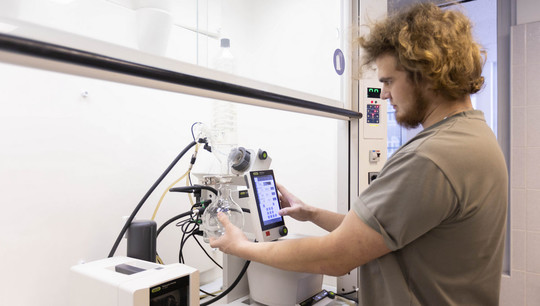Ural Federal University Scientists Develop Compound Carrying The Potential Antitumor Activity
Chemists from the Ural Federal University and Volgograd State Medical University have created a compound that suppresses cancer cells. The powerful new substance could become the basis for antitumor drugs because it affects the pathology that leads to the development of malignant tumors, such as cancer of the breast, lung, prostate, and lymph nodes. The substance and the results of the experiments were published in the journal Molecules.
“Type 2 casein kinase (CK2) is known to suppress apoptosis in cells, but increased levels of type 2 casein kinase are observed in tumor cells, indicating that these cells are resistant to apoptosis compared to normal cells. If you block this protein, you can achieve tumor cell death. So, our team managed to develop a universal approach to the synthesis of new azolopyrimidines and obtain a library of corresponding heterocycles as potential inhibitors of casein kinase type 2,” explains Grigory Urakov, an Engineer of the Scientific Laboratory of Medical Chemistry and Advanced Organic Materials at UrFU.
Casein kinase 2 is a type of protein kinase that plays an important role in the regulation of cellular processes. CK2 is thought to be involved in diseases such as multiple sclerosis, inflammation, hypertension, and viral infections. But most importantly, CK2 has been proven to be a key regulator of cell apoptosis (cell death) and a key element that suppresses oncogenesis (the conversion of normal cells to cancer cells). By affecting the disruption of CK2, it is possible to stop tumor development.
“To date, a wide range of different molecules are known as CK2 inhibitors. These include polyhalogenated benzimidazole and benzotriazole derivatives, nitrogen-containing heterocycles and their polycondensed analogs, and coumarin derivatives. However, most currently available CK2 inhibitors do not have the properties necessary for successful clinical trials. At the same time, our compound showed good activity with respect to CK2 inhibition in the nanomolar range, which makes it possible to create analogs of these compounds,” says Grigory Urakov.
Its activity in relation to CK2 inhibition in the nanomolar range means that less of the drug is required for treatment than existing analogues, which means it is more effective and binds well to CK2. In addition, according to scientists, the new substance is a kind of “designer”- it has modification centers. This means that by leaving the base, it is possible to change the construction of the compound and obtain new substances, probably with more activity or new properties.
The substances were tested for inhibition of casein kinase 2 in Volgograd. There the scientists tested them in vitro, on the cells grown in the laboratory. The chemists plan to further study the substances and improve the obtained compounds.

